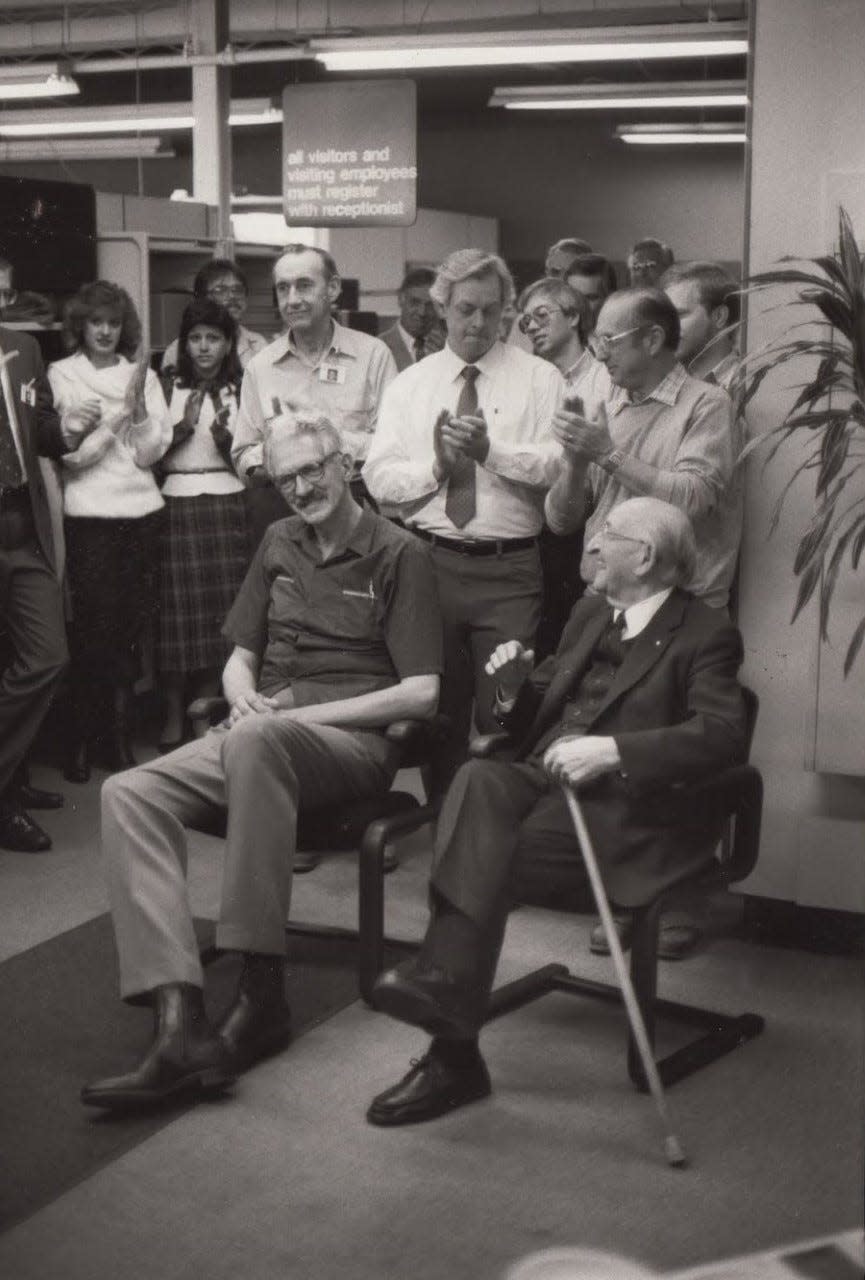Steve VanderVeen: DJ DePree was a servant leader

- Oops!Something went wrong.Please try again later.
DJ DePree was a change agent. Believing everyone was created in the image of God and abandoning himself to the strengths of others, he not only helped save Herman Miller Furniture from the Depression, but he turned the business into an industry leader.
In 1938, DJ and Nellie’s son, Hugh, moved to New York City to work for Gilbert Rohde, the designer DJ had partnered with, and Jim Eppinger, a salesperson. Herman Miller opened a showroom in Chicago’s Merchandise Mart in 1939, in New York City in 1941 and in Los Angeles in 1942.
Then, the company moved into office furniture with Rohde’s Executive Office Suite.
But in 1944, Rohde unexpectedly died. After seeing an article about George Nelson in Life Magazine, DJ and Hugh contacted him for designs. Nelson immediately made an impact.
When a writer in New York asked Nelson how he could do such wonderful work for a little company in Michigan, he replied, "They trust me." In 1946, Nelson, assisted by Irving Harper, created Herman Miller’s distinctive logo and brought in designers Charles and Ray Eames, who introduced Herman Miller to molded plywood furniture, one of the results of which was the famous Eames Lounge Chair.

Already practicing participative management, in 1949, DJ and Hugh heard Dr. Carl Frost speak in Grand Rapids. Frost introduced them to the Scanlon Plan, an approach that rewarded employees for using their complementary gifts for the good of the whole.
Here's how DePree's son, Max, described it: “[Scanlon] called for a recognition that everybody brings something to the game, that there aren't great differences between higher management and what we call direct labor. People are similar in lots of ways and … you can depend on them.
"But one of the reasons that not many people besides DJ did this … was that most businesspeople were not ready to share the financial information, which you have to share if you’re going to have a participative management program.”
Everyone also had to agree to have their productivity measured. For DJ, the Scanlon Plan reflected another biblical belief: the poor had a right to ask for pay, which meant he owed them the opportunity to work and to be paid on time. The Scanlon Plan enhanced Herman Miller’s capacity to do that.
More: Steve VanderVeen: The long and winding history of Herman Miller Furniture
More: Steve VanderVeen: How strong religious convictions led Herman Miller Furniture to success
In 1951, designer Alexander Girard joined Herman Miller. In the late 1950s, designer Bob Propst did the same. Propst helped Herman Miller create the Action Office, which transformed the industry again.
Often asked if Herman Miller was a Christian company, DJ had a timeless answer. He said that only a person, not a company, could have a relationship with God. He welcomed people from all faith perspectives because he believed they were created in the image of God and had God-given gifts to contribute to the whole.
Thus, he was not an authoritarian leader; rather, DJ believed his Christian faith should impact not only why but how he led. According to Max, “He [referred] to the Book of James where it talks about how you treat people."
His style of participative management guided by a moral foundation became what today we call “servant leadership.”
Subscribe: Get all your breaking news and unlimited access to our local coverage
In 1960, the year Herman Miller went public, DJ founded the Ventura Baptist Church. In 1962, Hugh became president and DJ chairman of the board of the company. Max served as CEO from 1980-1987, the last DePree to head Herman Miller, and wrote down many of DJ’s principles in his books.
According to Max, "He was still teaching adult Sunday School when he was 98 years old. ... He was strong. When I watch people trying to be entrepreneurs these days … I’m amazed at what he did.”

Hugh DePree died in 2002. Max died in 2017.
In 2021, Herman Miller merged with Knoll and became MillerKnoll.
Information for this and the previous two stories comes from Robert Swierenga’s "Holland, Michigan," Andrew Dervan’s "Colonial Clock Company, Zeeland Michigan," "Herman Miller: A Way of Living," "Dirk Jan DePree: Biography" and various blogs and websites.
— Community Columnist Steve VanderVeen is a resident of Holland. Contact him through start-upacademeinc.com.
This article originally appeared on The Holland Sentinel: Holland History: DJ DePree was a servant leader

